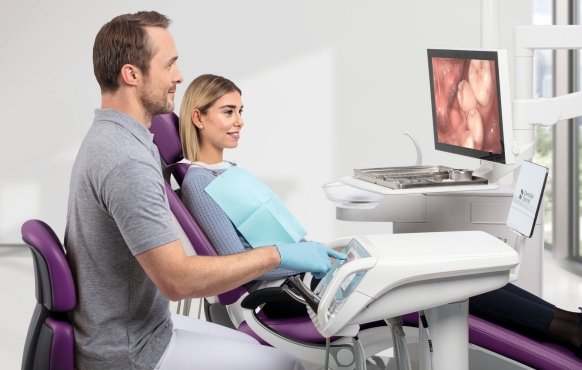
Think about your last treatment and how long your patient was in the chair. Now think about your posture and how aware you were of your body. The reality is that long days of back-to-back appointments take their toll on your body over time: dentists can spend as many as 60,000 hours per lifetime in tense and awkward positions. Good ergonomics in dentistry are crucial for treatment success and keeping you healthy so you can enjoy a full career.
Dentists are vulnerable to muscle imbalances, so you need to pay careful attention to ergonomics during work hours. Because the oral cavity is dark and narrow, accessing it can cause you to adopt unnatural positions as you bend over during treatment procedures. This can lead to physical impact and repetitive strain injuries. But of course, ergonomics in dentistry is about so much more than just posture: it’s also about how you interact with all the elements in your treatment environment.
Following dental ergonomic guidelines and investing in an ergonomic dental chair that embraces ergonomic design principles can compensate for the detrimental habits that contribute to pain and stress. This article highlights the importance of following good dental ergonomics in your work life, and how you can optimize and improve your workflow for better health.Please define text